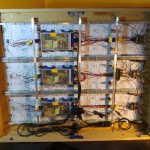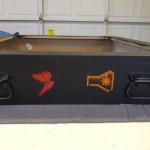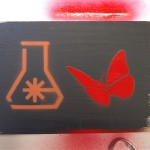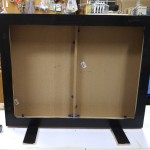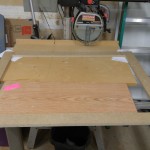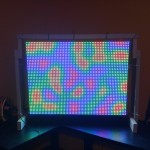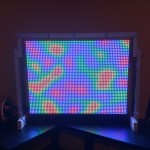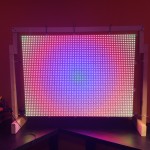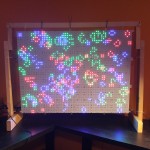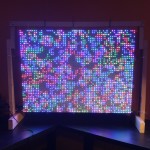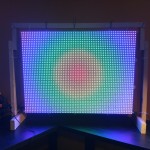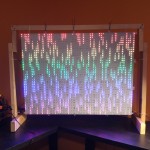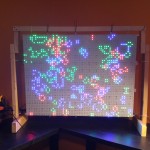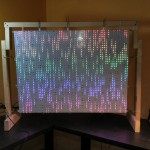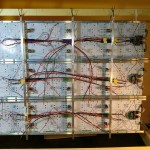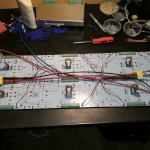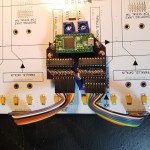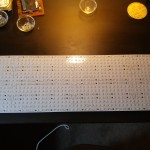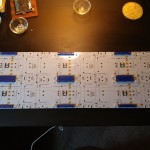News Flash: I love to make things.
The explosion of home use fabrication technologies has given modern humans powers, god-like powers that we could only dream of even 10 years ago. Digital design and fabrication are now accessible to practically everyone. Those that do not have fabrication facilities at home can use services like Shapeways, 3D hubs, Oshpark, and Ponoko. to fill the gap and create practically whatever they can dream up. What are you doing with your god-like powers?
I’ve been asking myself this same question lately and it turns out that I use them to make clocks. Funny thing is I’m not really a clock person, but I know that I need to learn how to use these tools: 3D printing, laser cutting, circuits, and clocks seem to be the go-to target for my aspirations.
This led to ClockTHREE and ClockTHREEjr word clocks and also a Kandy, a two-sided race timer. But none of these clocks have moving parts. I figure I need to understand mechanical issues to really employ my god-like powers when inspiration hits.
Motivated by clocks like this one from Brian Wagner I set out to design my own version of the gear clock. GearClock1.

Like Brian’s clock, the hour wheel rotates indicating the hour at the top. Unlike Brian’s clock, and others, this clock uses a idler gear to push hour ring out to the radius of the minute hand. The parts are a made with laser-cut acrylic and 3D printed PLA. A single hand is attached to the drive axle to indicate the minute on a stationary disk, concentric with the hour ring. AlaMode, which comes with a DS3231 real time clock, was used in conjunction with the Adafruit motor shield to control movement. Blue accents really make this clock pop. But the clock had mechanical issues and would bind up frequently.
I realized that if I replaced the idler gear with a planetary gear, It could drag an hour hand along for the ride like a normal clock. GearClock2.

GearClock2
After first getting the gear ratio wrong (how many hours in the day are there again?) I got it right. Kevin Osborn jazzed up the design with some sick filigree hands and taught me how to draw in InkScape and import into OpenSCAD. He also printed all of the many iterations of gears on this and previous clocks. Thanks Kevin!
The clock looks pretty basic, and it is, but remember my goal is to learn mechanics and I learned a lot with this clock. Form follows function. I take that to mean, first make it work, then worry about how it looks. It can also mean: make it work really well, and its shape will appeal. We are getting there. The good news is this clock really works. We have it set up on a hutch in our kitchen and use it every day. But I have to admit, the shape is a little awkward and the electronics are unsightly. The cheap 48-step motors tick every 75 seconds, which is more than frequent enough for a wall clock, but we can do better.
GearClock3 is the same basic mechanical design with a 200 step pancake motor and electronics housed in a separate box.

An Arduino pro-mini, a Pololu stepper driver, and a Chonodot make up the electronics package. I really like this stepper driver. It is very easy to use: set the step pin to HIGH to move forward one step. No complex driver software is required.
Aesthetically, this clock has many of the right elements although a flash of colored acrylic would really make the numbers pop. Everyone loves GearClock3, but the first thing they ask is: can you do seconds?
GearClock4 adds a second hand.
I’ve come to appreciate the difficulty of the standard hour, minute second clocks: Three concentric hands driven at three rates with a ratio of 3600:1 between the hour and second hands. A 12:1 ratio was already working with the planetary gear. The 60:1 ratio was solved by using two reduction stages that take the motion off center, then back on. After several experiments with the gear lash settings, I finally found a combination that works well and makes a pleasant tick (not too loud). One issue is setting this clock. You have to fast forward the second hand, which means you’d like to move the seconds hand as fast as possible. This second hand can turn a complete revolution in 0.2 seconds which means it can fast forward though twelve hours in less than two and a half minutes. A sealed bearing on the reduction gear allows this and should work for years to come.
What’s next? Anool is working on a custom circular PCB that will that will bring the electrics up to par with the mechanics. The PCB will host the real time clock, an Arduino compatible ATMEGA328, hall effect sensors to detect hand position, and a DS3231 real time clock, and GPS unit for time synchronization. Stay tuned to our GitHub repo for updates….


